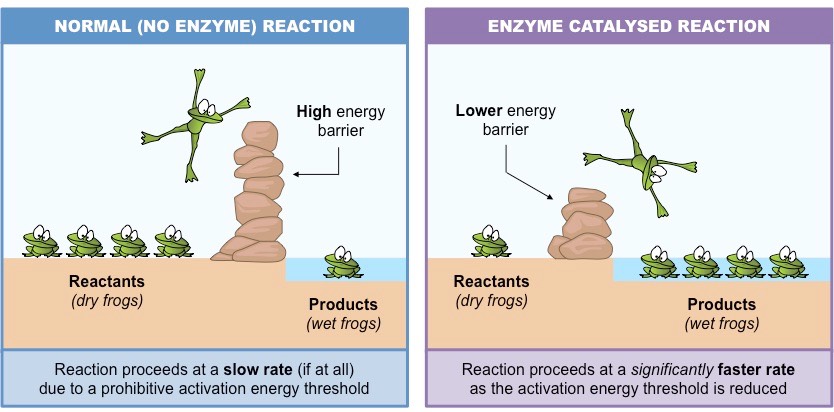![]()
Understanding:
• Enzymes lower the activation energy of the chemical reactions that they catalyse
Every chemical reaction requires a certain amount of energy in order to proceed – this is the activation energy (EA)
- Enzymes speed up the rate of a biochemical reaction by lowering the activation energy
- When an enzyme binds to a substrate it stresses and destabilises the bonds in the substrate
- This reduces the overall energy level of the substrate’s transitionary state, meaning less energy is needed to convert it into a product and the reaction proceeds at a faster rate
Activation Energy

Types of Enzymatic Reactions
If the reactants contain more energy than the products, the free energy is released into the system (exergonic)
- These reactions are usually catabolic (breaking down), as energy is released from broken bonds within a molecule
If the reactants contain less energy than the products, free energy is lost to the system (endergonic)
- These reactions are usually anabolic (building up), as energy is required to synthesise bonds between molecules
Reaction Pathways of an Exergonic and Endergonic Process

